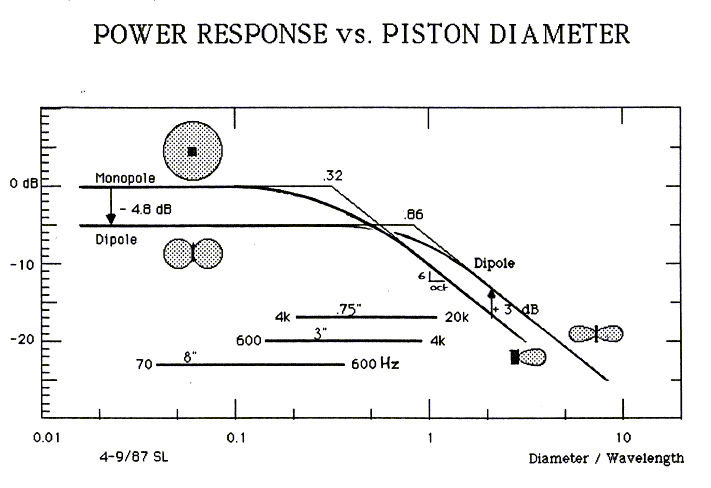... and how is it different from polar response?
I'm sure that's a total noob question. I'm trying to understand this document:
Which starts out with:
So... does polar response show the off-axis response along a specific plane, while power response is some kind of integration of the polar response over a certain 'cone'? Are there formal definitions for these terms? If power response combines the polar responses at multiple angles, is there a weighting involved?
I'm also trying to understand the graphs at the bottom of that page (and on subsequent pages of this article). The polar response graphs are vertical, right, and that's the lobe tilt of odd-order XOs. I don't really understand the power response curves, and what they represent physically. What does "the power response for the Linkwitz/Riley crossovers shows a notch at the crossover point" mean, and how is it related to the polar response (if it is)?
Thanks.
I'm sure that's a total noob question. I'm trying to understand this document:
Which starts out with:
The majority of discussion on crossovers used in loudspeaker intended for home use centers the on axis response and the vertical/horizontal polar radiation pattern. Little attention is paid to power response.
I'm also trying to understand the graphs at the bottom of that page (and on subsequent pages of this article). The polar response graphs are vertical, right, and that's the lobe tilt of odd-order XOs. I don't really understand the power response curves, and what they represent physically. What does "the power response for the Linkwitz/Riley crossovers shows a notch at the crossover point" mean, and how is it related to the polar response (if it is)?
Thanks.


 I'm trying to understand some of those articles.
I'm trying to understand some of those articles.



Comment